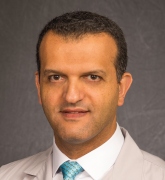RISK FACTORS ASSOCIATED WITH SPINAL CORD ISCHEMIA DURING AORTIC ANEURYSM REPAIR. Journal Article
Local Library Link: Find It @ Loyola
| Authors: | Behzadi, F; Simon, JE; Zielke, TJ; Cook, JT; Costa, RA; Bechara, CF; Prabhu, VC |
| Article Title: | RISK FACTORS ASSOCIATED WITH SPINAL CORD ISCHEMIA DURING AORTIC ANEURYSM REPAIR. |
| Abstract: | INTRODUCTION: The risk of spinal cord injury (SCI) with aortic aneurysm repair can cause significant neurological morbidity. Prevention of SCI is critical. We sought to identify risk factors that predispose to SCI that may guide strategies to mitigate the occurrence of SCI during and following these procedures. METHODS: This study includes all adults who underwent atraumatic, unruptured, thoracic and supra-renal aortic aneurysm repairs (endovascular or open) at our institution over 11 years (2010-2020). Our database included patient demographics, aneurysm anatomic features, and operative characteristics and an extreme gradient boost (XGB) machine method was used to develop a predictive model for SCI. The model was trained on a 80% randomly stratified cohort of the data and tested on the remaining 20% testing cohort. Shapley values were used to determine the most important predictive factors of SCI and decision trees were used to identify risk factor threshold values and highest risk factor combinations. RESULTS: Information was collected for 174 adult patients undergoing thoracic and supra-renal aortic repair from 2010-2020. Fifty-eight percent of the patients were male. Ninety-seven (55.7%) patients had Open Aortic Repair and 87 (44.3%) had endovascular repair. Twenty-seven (15%) of all patients had major complications and were considered to have SCI. The XGB model converged over the training cohort with a testing cohort accuracy of 0.841 [Sensitivity = 75%, Specificity = 68%] and AUC of ROC of 0.774. The XGB model identified older age (> 65), history of neurologic disease, hyperlipidemia, diabetes, coronary artery disease, heart failure, poor renal function, 6 months since last aortic repair, chronic anticoagulant use, preoperational anemia (Hgb 9), thrombocytopenia (Plt 90,000), coagulopathy (PT > 15s and aPTT > 40s), hypotension (MAP 70 mmHg), longer operations (> 100 minutes), aneurysms longer than 5 cm, and anatomic location of aneurysm caudal to T-11 as risk factors for SCI in all types of aortic repair. Diabetic and heart failure patients undergoing longer operations (>100 minutes) with thrombocytopenia or aneurysms longer than 5 cm were at the highest risk. CONCLUSIONS: The XGB model accurately identified risk factors of SCI with aortic aneurysm repair that may guide patient selection, timing of surgery, and strategies to minimize the risk of SCI. |
| Journal Title: | Annals of Vascular Surgery |
| ISSN: | 1615-5947; 0890-5096 |
| Publisher: | Unknown |
| Date Published: | 2023 |


